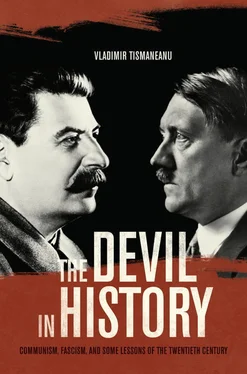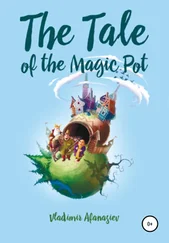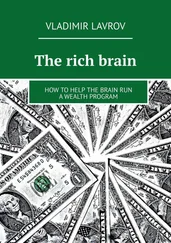Leninism was a form of modern messianism intolerant of realities escaping its ideological panorama. It was a production recipe for The Communist Manifesto’ s “scenario for the drama of millenarian redemption.” 130The professional revolutionaries who made up “the party of a new type” were, according to Yury Piatakov, “men of miracles” bringing into life “that which is considered impossible, not realizable and inadmissible…. [W]e are people of special temper, without any equivalents in history precisely because we make impossible possible.” 131Therefore, the party was the embodiment of historical reason and militants were expected to carry out its orders without hesitation or reservation. Discipline, secrecy, and rigid hierarchy were essential to such a party, especially during clandestine activities (like those in Russia). The main role of the party was to awaken proletarian self-consciousness and instill revolutionary doctrine (faith) into the dormant proletariat. This was the party’s salvific mission, and because of it the party was the embodiment of freedom. Instead of relying on the spontaneous development of consciousness among the industrial working class, Leninism saw the party as a catalytic agent bringing revolutionary knowledge, will, and organization to the exploited masses. 132Futurist poet Vladimir Mayakovsky was right when he said:
When we say Lenin
We mean the Party
And when we say Party
We mean Lenin. 133
First Leninism, then Stalinism, codified the total commitment to an apocalyptic scenario dedicated to bringing about not only a new type of society but also a new type of human being. 134With its ambition to initiate an anthropological revolution, Marxism can be regarded as a form of utopian radicalism—utopian because it is basically future oriented and overlooks the perennial features of the human condition, radical inasmuch as it aims to transform the body politic and establish a form of social organization totally different form all previous ones. Moreover, in its Bolshevik application, this utopian radicalism turned into “a set of values and beliefs, a culture, a language, new forms of speech, more modern customs and new ways of behaving in public and in private.” And the name under which all this came together was Stalinism—a self-identified separate and superior civilization. 135Marxism-Leninism as mythology therefore relied on two mutually conditioning myths: a sustaining one (the first workers’ state with its corollary the Great October Revolution) and an eschatological one (the realization of Communism). 136According to these myths, Marx’s collectivity of self-determined, quasi-divine beings undergoing “perpetual becoming that knows no limits and continually striving forwards anew” entered its kairos , accomplishing the ultimate destiny prefigured by history. This triumphant tale of humanity’s renewal was provisioned only by surrender and self-sacrifice to the will of the leader (unqualified yet). 137It was the “scientific” answer to the paradox of theodicy intrinsic to Marxism: the eschatological subject was identified, but its coming of age needed leadership—the Kautskyan intervention from without, Lenin’s party of a new type and, why not, ultimately Stalin’s revolution from above. Marxism-Leninism was the formula used to reconcile the ever-expanding rational mastery of the world with the aspiration for individual liberation.
The Leninist party is dead (it is quite ironic that the Gennady Zyuganov-style epigones of the Communist Party of the Russian Federation combine Slavophile orthodoxy, xenophobia, imperialism, and Bolshevik nostalgia in a baroque nationalist-cum-egalitarian collectivistic blending). 138But the cult of the party as a sacred institution, the sectarian vision of a community of virtuous, ascetic, righteous individuals selflessly committed to improving the life of humanity and erecting Nikolai Chernyshevky’s “Crystal Palace” here and now is not extinct. 139It explains the nature of the post-Communist transitions where initiatives from below are still marginal and the center of power remains, in many cases, as conspiratorial, secretive, and nondemocratic as it was in pre-Leninist and Leninist times. Is this bound to stay the same? My answer is tentatively negative; after all, the monolith is broken, the dream of Communism as the secular kingdom of God has failed. The challenge remains, however, of coming to terms with Lenin’s legacies and admitting that Sovietism was not imposed by extraterrestrial aliens on an innocent intelligentsia but rather found its causes, origins, and most propitious ground in the radical segments of Russian political culture. 140To put it simply, the Third International and the major schism within the world Marxist movement were the consequences of Lenin’s defiant gesture, his seizure of power in the fall of 1917. His determination to force socialist revolution upon the czarist empire, and implicitly upon the world, triggered the beginning of the epoch of totalitarian politics. And his single-mindedness would be emulated by others. Rosa Luxemburg again anticipated the significance of the Bolshevik push for state power: “Their October uprising was not only the actual salvation of the Russian Revolution: it was also the salvation of the honor of international socialism.” 141Indeed, until 1989, the October Revolution remained the central symbolic pillar of the world Communist movement.
The two letters Lenin sent to the Bolshevik Central Committee on September 15, 1917 (The Bolsheviks Must Assume Power and Marxism and Insurrection) , sum up the voluntaristic pathology of the political that was to plague the rest of the century: “History will never forgive us if we do not assume power now…. We shall win absolutely and unquestionably…. Our victory is assured for the people are close to desperation and we are showing the entire people a way out…. The majority of the people are on our side…. It would be naive to wait for a ‘formal’ majority; no revolution ever waits for that.” 142Hitler shared this self-entitlement, for he too was convinced that mundane politics were to be sacrificed on the altar of the total revolution: “We are avid for power, and we take it wherever we can get it…. Wherever we see a possibility to move in, we go!… Whoever has us clinging to his coattails can never get rid of us again.” 143To paraphrase Claude Lefort, both Leninism and Fascism identified with the revolution as an irreversible moment breaking with the past and creating a totally new world. In this sense they are cosmic mutations of symbolic structure.
The Bolshevik takeover of power in October 1917 inaugurated a period of global ideological warfare that may have come to an end only with the collapse of the USSR in 1991 (the “age of extremes,” as Eric Hobsbawm calls this epoch or, to use George Lichtheim’s term, later adopted by Ernst Nolte, “the European civil war”). Because of Lenin, a new type of politics was born in the twentieth century, one founded upon fanaticism, elitism, unflinching commitment to a sacred cause, and total submission of critical reason by means of faith to a self-appointed “vanguard” of militant illuminati. 144Clara Zetkin’s exalted proclamation at the Third Party Congress of the KPD (the German Communist Party) in 1923 reflected the ethos of a new political religion being born: “Take off your shoes! The ground on which you stand is holy ground. It is ground sanctified through the revolutionary struggle [and] the revolutionary sacrifices of the Russian proletarian.” 145With Lenin, the activist turned into a professional revolutionary (regardless of background, intellectual or proletarian—Heinz Neumann or Ernst Thälmann in the KPD; Gheorghiu-Dej, Ana Pauker, David Fabian, or Lucrețiu Pătrășcanu in the RCP). Henceforth, the revolutionary fanatic sought deliverance in the elevation of mass movements. 146S/he was a soldier acting out a newly acquired, virtuous identity validated by the righteousness of the world mission. 147
Читать дальше












